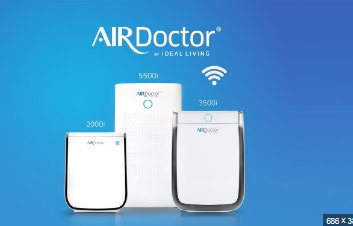Reduce Allergens at Home and Save with an Air Doctor Coupon Code

Indoor air quality is a growing concern for households today, especially when it comes to minimizing allergens in the home. Allergies affect millions of individuals across the globe, and allergens such as pollen, dust mites, mold spores, and pet dander have a direct impact on day-to-day comfort. Thankfully, air purification technology provides an effective way to create a healthier indoor environment. With the added benefit of promotional deals, Air Doctor coupon code solutions are becoming accessible without breaking the bank.
This blog dives into why maintaining clean air is vital, explores the types of common household allergens and their effects, and explains the significant role air purification systems can play in promoting wellness at home. We’ll also discuss how savings opportunities can make these solutions even more appealing.
Common Household Allergens and Their Impacts
Indoor air may appear clean, but countless invisible particles can trigger allergies and irritations. The following are some of the most common household allergens, their sources, and the resulting effects.
Pollen
Even indoors, outdoor seasonal pollen finds its way into homes by clinging to clothes, pets, and open windows. Pollen can cause allergies that include sneezing, runny nose, itchy eyes, and nasal congestion, significantly affecting individuals’ well-being.
Dust Mites
Dust mites thrive in bedding, upholstered furniture, and carpets. While they’re too small to see with the naked eye, their presence often exacerbates conditions like asthma and causes symptoms such as coughing or skin allergies.
Mold Spores
Mold growth thrives in areas where humidity is high, such as bathrooms and basements. The airborne spores released by mold can trigger coughing, throat irritation, and long-term respiratory issues when left unmanaged.
Pet Dander
Pets are beloved members of many households, but their dander (tiny, shed skin particles) can linger in the air, causing allergic reactions. These reactions include coughing, wheezing, and itchy skin or eyes.
VOCs in Cleaning Products
Volatile Organic Compounds (VOCs) present in some household cleaners, candles, and paints also contribute to poor indoor air quality. These compounds not only exacerbate allergies but pose a general health hazard, such as irritation or headaches.
Why Reducing Allergens at Home Matters
Lowering allergen levels in the home is not just about temporary comfort—it’s about long-term health and wellness. Prolonged exposure to allergens has been linked to chronic respiratory conditions, such as asthma or bronchitis. Beyond physical health, a clean-air environment enhances quality of life by minimizing disruptions like frequent sneezing or difficulty breathing. Families, children, and individuals with pre-existing conditions stand to benefit the most from preventive air purification measures.
Reducing allergens also promotes better sleep and productivity. Common allergy symptoms—such as congestion or a scratchy throat—can disrupt rest and make day-to-day tasks less enjoyable and harder to complete.
How Air Purification Can Help
Air purification technology is specifically designed to filter out allergens and pollutants, contributing directly to indoor air quality improvement. It offers a comprehensive solution to maintaining a clean and allergen-free home. Here’s how air purification systems make a difference.
Advanced Filtration
High-quality air purifiers often come designed with advanced filtration systems, such as HEPA filters. These are highly effective in capturing tiny particles, from pollen to smoke, ensuring they’re removed from the air before they can trigger allergies or irritations.
Odor Removal
Apart from allergens, purification systems tackle odors from cooking, pets, and VOCs. Cleaner air translated into fresher-smelling spaces without needing artificial fragrances.